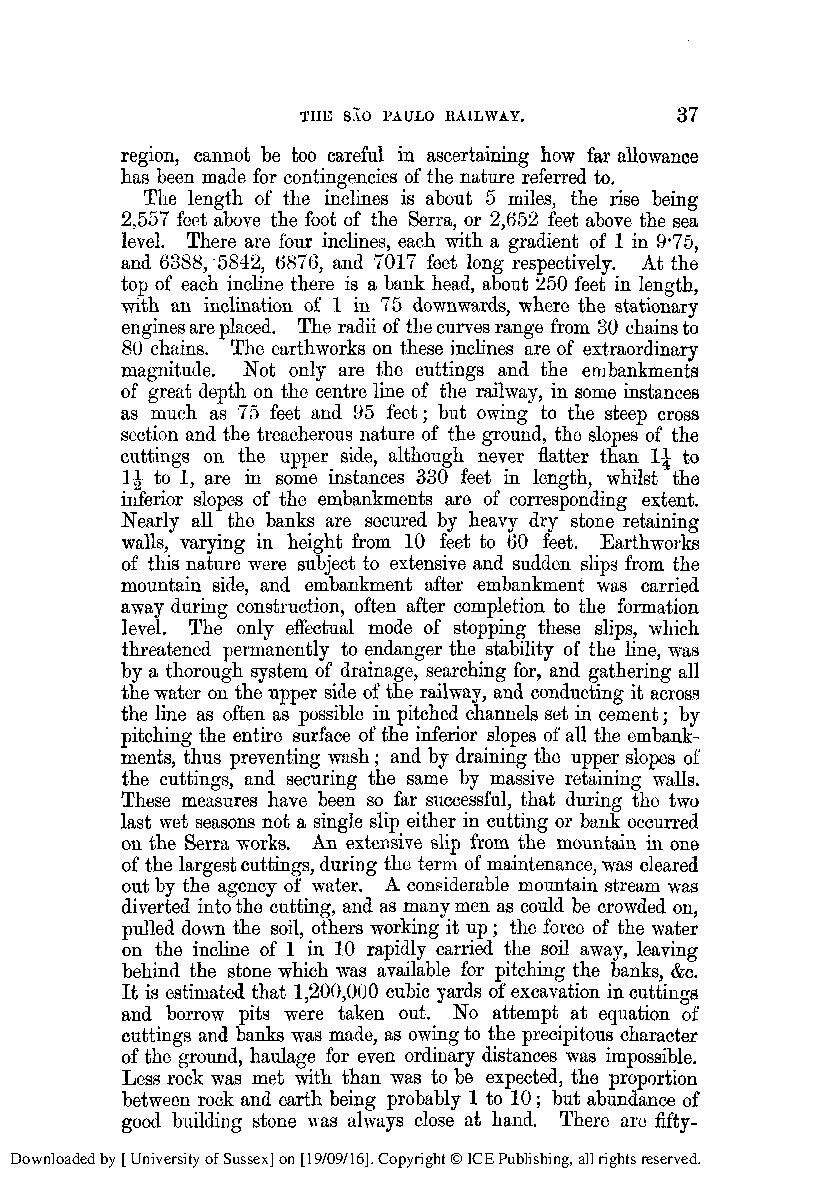region, cannot be too careful in ascertaining how far allowance has been made for contingencies of the nature referred to.
The length of the inclines is about 5 miles, the rise being 2,557 feet above the foot of the Serra, or 2,652 feet above the sea level. There are four inclines, each with a gradient of 1 in 9.75, and 6388, 5842, 6876, and 7017 feet long respectively. At the top of each incline there is a bank head, about 250 feet in length, with an inclination of 1 in 75 downwards, where the stationary engines are placed. The radii of the curves range from 30 chains to 80 chains. The earthworks on these inclines are of extraordinary magnitude. Not only are the cuttings and the embankments of great depth on the centre line of the railway, in some instances as much as 75 feet and 95feet;but owing to the steep cross section and the treacherous nature of the ground, the slopes of the cuttings on the upper side, although never flatter than 1 1/4 to 1 1/2 to 1, are in some instances 330 feet in length, whilst the inferior slopes of the embankments are of corresponding extent. Nearly all the banks are secured by heavy dry stone retaining walls, varying in height from 10 feet to 60 feet. Earthworks of this nature were subject to extensive and sudden slips from the mountain side, and embankment after embankment was carried away during construction, often after completion to the formation level. The only effectual mode of stopping these slips, which threatened permanently to endanger the stability of the line, was by a thorough system of drainage, searching for, and gathering all the water on the upper side of the railway, and conducting it across the line as often as possible in pitched channels set in cement; by pitching the entire surface of the inferior slopes of all the embankments, thus preventing wash; and by draining the upper slopes of the cuttings,and securing the same by massive retaining walls. These measures have been so far successful, that during the two last wet seasons not a single slip either in cutting or bank occurred on the Serra works. An extensive slip from the mountain in one of the largest cuttings, during the term of maintenance, was cleared out by the agency of water. A considerable mountain stream was diverted into the cutting, and as many men as could be crowded on, pulled down the soil, others working it up; the force of the water on the incline of 1 in 10 rapidly carried the soil away, leaving behind the stone which was available for pitching the banks, &c. It is estimated that 1,200,000 cubic yards of excavation in cuttings and borrow pits were taken out. No attempt at equation of cuttings and banks was made, as owing to the precipitous character of the ground, haulage for even ordinary distances was impossible, Less rock was met with than was to be expected, the proportion between rock and earth being probably 1 to 10; but abundance of good building stone was always close at hand. There are fifty
